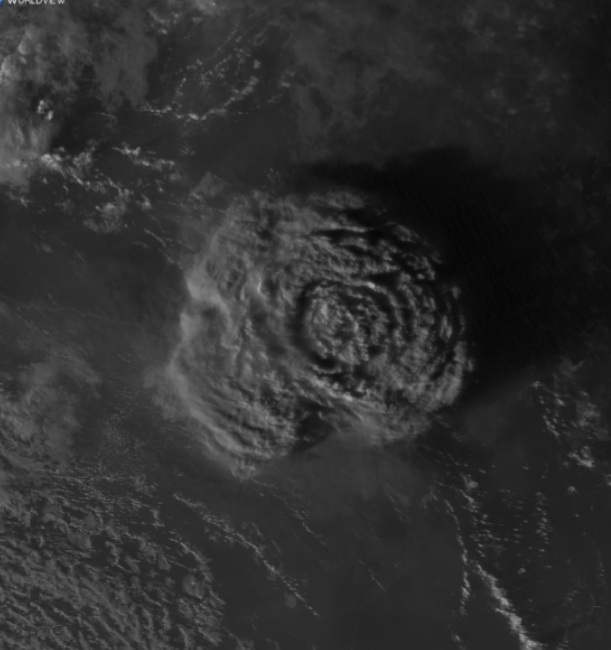**** Info via Environment Canada
Volcanic eruption penetrates mesosphere
On January 15, a powerful volcanic eruption obliterated a small, uninhabited South Pacific island known as Hunga Tonga-Hunga Ha’apai. Satellite imagery showed the eruption, with a plume of brown ash, steam and gas rising like a mushroom above the blue Pacific waters. A sonic boom could be heard as far away as Alaska, and associated tsunami waves crossed the ocean and reached Canada’s Pacific coast later that same day.

Hunga Tonga-Hunga Ha’apai Erupts January 15, 2022. Credit: NASA Earth Observatory
NASA scientists have since revealed that the plume from the explosive eruption rocketed debris up to 58 kilometres into the atmosphere, allowing it to briefly penetrate the middle layer of the atmosphere called the mesosphere.
Layers of the atmosphere
Our planet’s atmosphere is made up of five main layers.
Most of the weather we see and feel occurs inside the lowest layer of the atmosphere, called the troposphere, which rises from the surface of the earth to an altitude of about 10km. Above the stratosphere lies the mesosphere. This very dry layer of the atmosphere rises from the top of the stratosphere to around 80-90 km above sea level. Like the troposphere, temperatures cool with height in the mesosphere, but it is extremely difficult for clouds to form there because the air is so dry.
The 58-kilometre peak plume height from the Hunga Tonga – Hunga Ha’apai volcano is the tallest volcanic plume ever recorded in the satellite era, beating the previous record of 35 km from Mount Pinatubo in the Philippines in 1991.
For more: Volcanoes in Canada.




